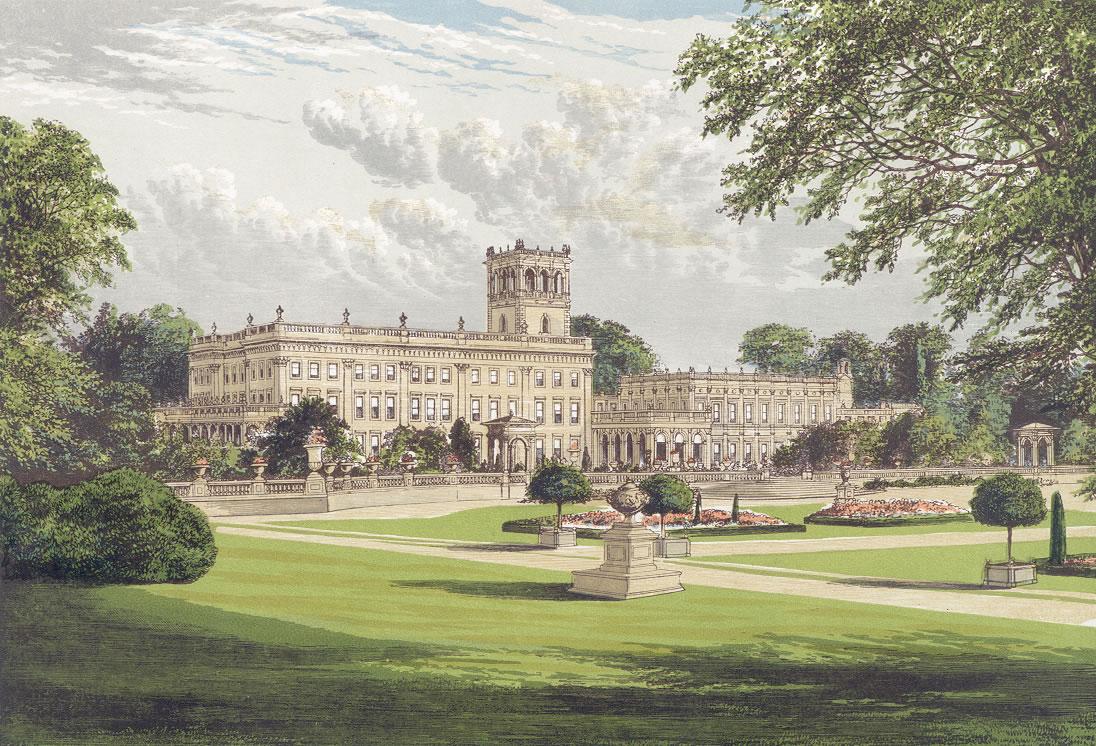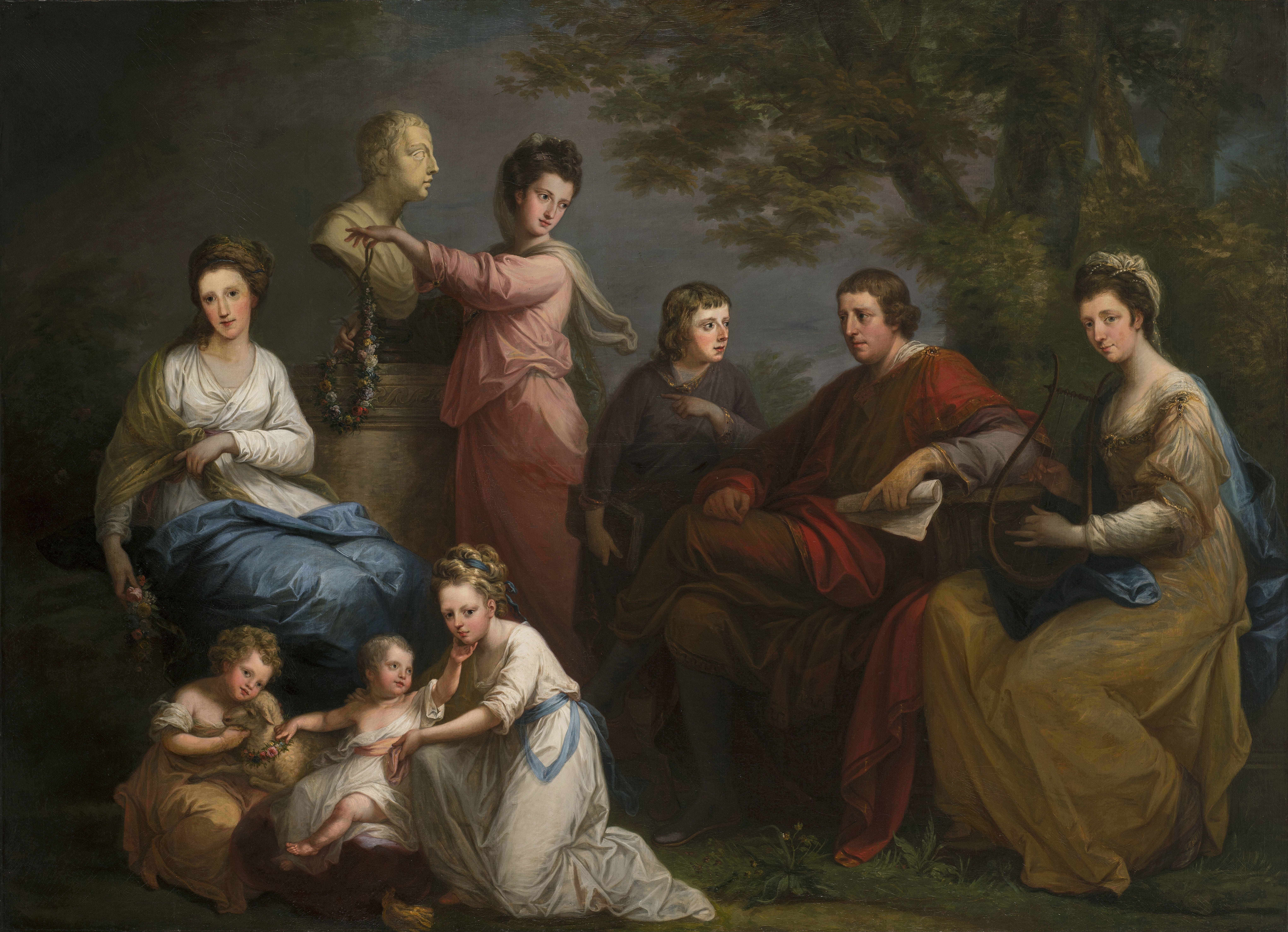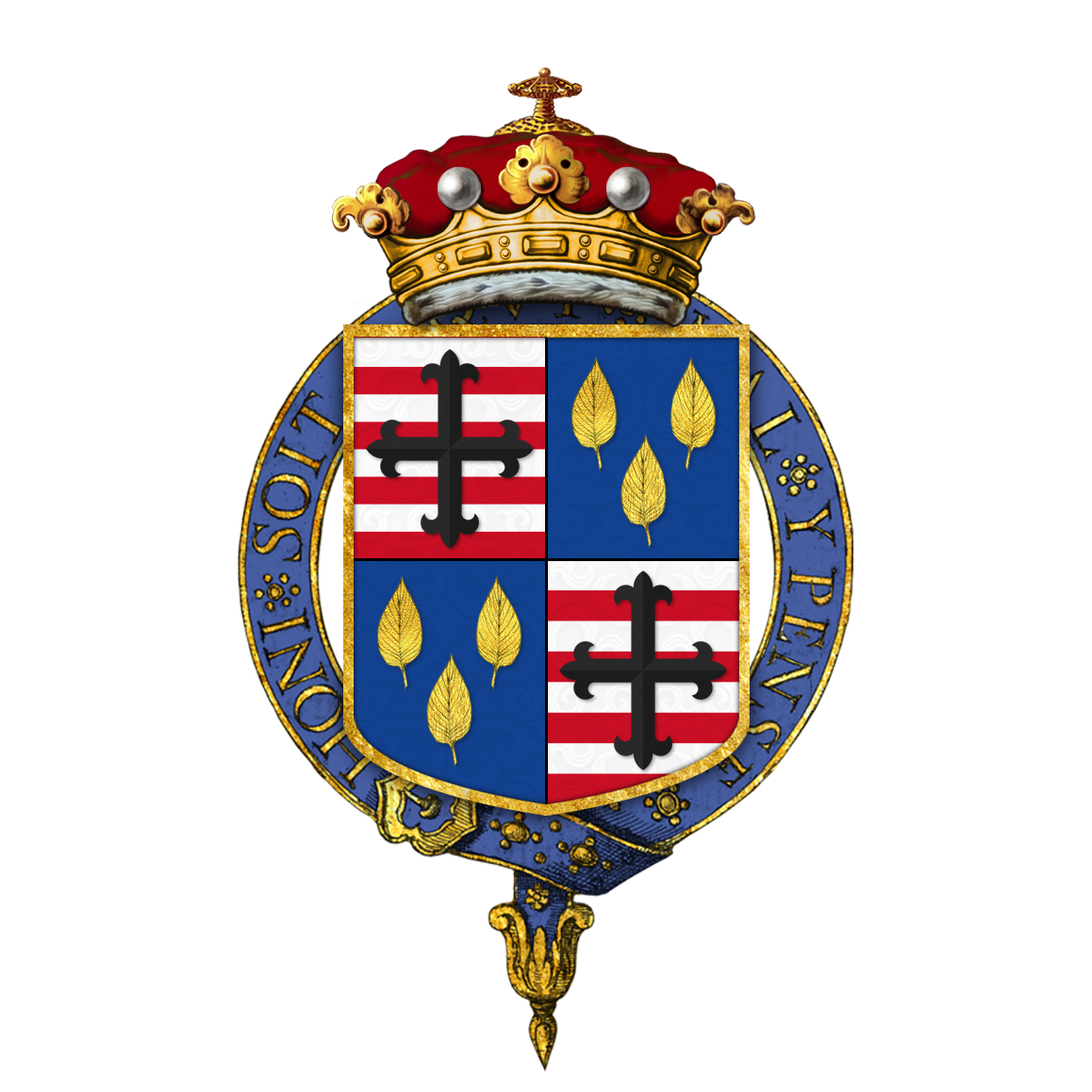1. Overview
Granville Leveson-Gower, 1st Marquess of Stafford, was a prominent British politician and nobleman who served for a quarter-century in the British Cabinet during the late 18th century. Born on August 4, 1721, he rose through the ranks of the British political system, initially serving in the House of Commons before inheriting his father's peerage and moving to the House of Lords. Known by the courtesy title Viscount Trentham from 1746 to 1754 and then as The Earl Gower until 1786, he was ultimately created Marquess of Stafford in recognition of his extensive public service. His career was marked by significant cabinet roles, including Lord President of the Council and Lord Privy Seal, and his influence as a key figure in various administrations, notably during the American Revolutionary War and the political shifts of the 1780s. Beyond his political contributions, he was also a substantial landowner and investor, particularly in the burgeoning industrial regions of Britain, amassing considerable wealth through land, mining, and canal interests. His legacy extends through his numerous descendants who continued to play influential roles in British political and social history.
2. Background
Granville Leveson-Gower's background provided him with a strong foundation in the British aristocracy and political landscape, stemming from a lineage deeply involved in public affairs.
2.1. Family and Ancestry
Granville Leveson-Gower was the son of John Leveson-Gower, 1st Earl Gower (1694-1754) and his first wife, Lady Evelyn Pierrepont. His father, John Leveson-Gower, was a prominent Tory politician who made history as the first major Tory to join the government following the succession of George I of Great Britain, entering the administration of John Carteret, 2nd Earl Granville in 1742. Granville's maternal grandparents were Evelyn Pierrepont, 1st Duke of Kingston-upon-Hull and his first wife, Lady Mary Feilding. Lady Mary was the daughter of William Feilding, 3rd Earl of Denbigh and his wife, Mary King. This extensive lineage connected him to several influential families within the British peerage.
2.2. Education
Leveson-Gower received a distinguished education befitting his aristocratic status. He attended Westminster School, a renowned public school in London, before proceeding to Christ Church, Oxford, one of the constituent colleges of the University of Oxford. His education prepared him for a life of public service and political engagement.
3. Early Political Career
Granville Leveson-Gower's entry into politics began with his service in the House of Commons before he ascended to the House of Lords upon inheriting his family's peerage. His early career was characterized by his association with a powerful political faction and his initial appointments to governmental positions.
3.1. Parliamentary Service
Granville Leveson-Gower was first elected to Parliament in December 1744, representing the constituency of Bishop's Castle in a by-election. He served this constituency until 1747. In the general election of 1747, he successfully transitioned to represent the Westminster constituency, holding this seat until April 1754. His final period in the House of Commons was brief, as he was elected for the Lichfield constituency in April 1754. However, his time in the lower house concluded swiftly when, on December 25, 1754, his father passed away, leading to his succession to the family peerage as the 2nd Earl Gower. This inheritance necessitated his move from the House of Commons to the House of Lords, where he would continue his extensive political career.
3.2. Political Affiliations and Early Roles
From 1746, following the death of his elder brother, Granville Leveson-Gower was known by the courtesy title of Viscount Trentham. He was closely associated with the political faction led by John Russell, 4th Duke of Bedford, who was his brother-in-law. This group was colloquially known as the "Bloomsbury Gang". As a member of this influential faction, Leveson-Gower was granted several early governmental positions. In December 1755, he was appointed Lord Privy Seal and became a Privy Counsellor. He served as Lord Privy Seal until June 1757, under the administrations of Duke of Newcastle and Duke of Devonshire. Following this, he served as Master of the Horse from June 1757 to 1760. In November 1760, he became the Master of the Great Wardrobe, a position he held until 1763. His ascent continued with his appointment as Lord Chamberlain in April 1763. However, his tenure as Lord Chamberlain ended in July 1765 when he was forced to resign due to the rise of the Whig reformist leader, 2nd Marquess of Rockingham.
4. Political Career and Public Service
Granville Leveson-Gower's political career was marked by his long tenure in significant cabinet positions and his involvement in pivotal decisions that shaped British policy, particularly concerning the American colonies.
4.1. Cabinet Positions
Leveson-Gower held a series of high-ranking cabinet positions throughout his career. After his resignation as Lord Chamberlain in 1765, he was offered the position of First Lord of the Admiralty by Prime Minister William Pitt the Elder in August 1766, but he declined. However, in December 1767, he accepted the role of Lord President of the Council under Duke of Grafton's administration. He held this important office for over a decade, serving through the administrations of Chatham, Grafton, and Lord North. He resigned from this position in November 1779.
After a period out of government, he re-entered the cabinet as Lord President of the Council once more in December 1783, serving under William Pitt the Younger's new administration until December 1784. Following this, he exchanged the Lord Presidency for his previous role as Lord Privy Seal in November 1784. He continued to serve as Lord Privy Seal until July 1794, when he retired from public affairs, coinciding with the entry of 3rd Duke of Portland into the cabinet. In addition to his cabinet roles, he also served as Lord Lieutenant of Staffordshire and Custos Rotulorum of Staffordshire from January 1755 to 1799, and as Senior Privy Counsellor from 1793 until his death in 1803.
4.2. Key Political Stances and Actions
As Lord President of the Council in Lord North's administration, Granville Leveson-Gower was a key proponent of a hard-line policy towards the American colonists. His initial support for the continuation of the American Revolutionary War reflected a firm stance against colonial independence. However, by 1779, he became increasingly frustrated with what he perceived as the North administration's inept handling of the war, leading to his resignation from the cabinet in November of that year. This shift in perspective highlighted the growing divisions within the British government regarding the American conflict and its significant social and economic implications for both Britain and the colonies.
Following North's resignation in March 1782, Leveson-Gower was approached by George III to form a new ministry. However, he declined, believing that the cooperation of the opposition Rockingham faction was essential for a stable government, and he deemed it impossible to secure their support. He also refused subsequent offers to join the government from both Lord Shelburne and the Fox-North coalition. Instead, he played a crucial role in orchestrating the downfall of the Fox-North coalition, a significant political maneuver that paved the way for William Pitt the Younger to form a new government. For his services and loyalty, particularly as a figure seen as a "King's friend," he was rewarded with the Lord Presidency of the Council again in Pitt's administration, and later the Lord Privy Seal, remaining a cabinet minister until his retirement in 1794.
5. Wealth and Investments
Granville Leveson-Gower's political influence was complemented by his substantial personal wealth, which was significantly augmented by strategic investments in the burgeoning industrial economy of Britain.
5.1. Financial Holdings
By 1799, Granville Leveson-Gower, or his immediate family benefit trust, was estimated to be the fifth-wealthiest small family unit in Britain. His vast financial holdings were valued at approximately 2.10 M GBP. This immense wealth was primarily derived from diversified assets, including extensive land ownership, lucrative mining interests, and crucial arterial canal-toll rights. He had speculatively invested in these canal projects, recognizing their potential as vital arteries for trade and industry during the Industrial Revolution. A significant portion of these assets, particularly those related to mining and canals, was concentrated in Staffordshire's Black Country, a region that was rapidly industrializing and becoming a hub of coal mining and manufacturing. These investments not only contributed to his personal fortune but also played a role in the economic development of the region, influencing local employment and infrastructure.
6. Personal Life
Granville Leveson-Gower's personal life was marked by three marriages and the birth of numerous children who would go on to establish prominent families and continue the Leveson-Gower legacy.
6.1. Marriages and Spouses
Granville Leveson-Gower married three times during his life.
His first marriage took place on December 23, 1744, to Elizabeth Fazakerley, the daughter of Nicholas Fazakerley. She brought a dowry of 16.00 K GBP. Tragically, Elizabeth died on May 19, 1745, from smallpox, the day after giving birth to their son, John, who also died shortly after birth.
He married for the second time in March 1748 to Lady Louisa Egerton, daughter of Scroop Egerton, 1st Duke of Bridgewater. This marriage lasted until her death in 1761.
His third marriage occurred on May 23, 1768, to Lady Susanna Stewart, daughter of Alexander Stewart, 6th Earl of Galloway. She survived him, dying in August 1805.

6.2. Children and Descendants
Granville Leveson-Gower had children from his second and third marriages.
From his second marriage to Lady Louisa Egerton, he had four children:
- Lady Louisa Leveson-Gower (born October 22, 1749 - died July 29, 1827), who married Sir Archibald Macdonald, 1st Baronet.
- Lady Margaret Caroline Leveson-Gower (born November 2, 1753 - died January 27, 1824), who married Frederick Howard, 5th Earl of Carlisle. She was the mother of George Howard, 6th Earl of Carlisle.
- George Leveson-Gower, 1st Duke of Sutherland (born January 9, 1758 - died July 19, 1833), who succeeded him in his titles and was later created Duke of Sutherland in 1833.
- Lady Anne Leveson-Gower (born February 22, 1761 - died November 16, 1832), who married the Right Reverend the Honourable Edward Venables-Vernon-Harcourt, who became Archbishop of York.
From his third marriage to Lady Susanna Stewart, he had four children:
- Lady Georgiana Augusta Leveson-Gower (born April 13, 1769 - died March 24, 1806), who married William Eliot, 2nd Earl of St Germans.
- Lady Charlotte Sophia Leveson-Gower (born February 11, 1771 - died August 12, 1854), who married Henry Somerset, 6th Duke of Beaufort. She was the mother of Henry Somerset, 7th Duke of Beaufort and Lord Granville Somerset.
- Lady Susanna Leveson-Gower (christened September 15, 1772 - died May 26, 1838), who married Dudley Ryder, 1st Earl of Harrowby.
- Granville Leveson-Gower, 1st Earl Granville (born October 12, 1773 - died January 8, 1846), who was later created Earl Granville.

7. Death
Granville Leveson-Gower, 1st Marquess of Stafford, died at the age of 82 on October 26, 1803. He passed away at Trentham Hall in Staffordshire, the family's country residence. At the time of his death, he was the last surviving member of the "Bloomsbury Gang," the political faction with which he had been associated for much of his career.
8. Assessment and Legacy
Granville Leveson-Gower's long and influential career left a significant mark on British politics and society, though not without its share of scrutiny.
8.1. Historical Evaluation
Granville Leveson-Gower's political career, spanning over five decades, saw him serve in various high-profile cabinet positions, demonstrating his enduring influence and adaptability within the shifting political landscape of late 18th-century Britain. His consistent presence in government, particularly his long tenures as Lord President of the Council and Lord Privy Seal, underscored his reliability and value to successive administrations. He was regarded as a "King's friend," indicating his loyalty to the monarch, which was a crucial asset in an era where royal favor significantly impacted political careers. His role in the downfall of the Fox-North coalition was a pivotal moment, showcasing his strategic acumen and ability to influence major political transitions. His contributions to governance included maintaining stability within the cabinet and advising on key policies during a period of significant domestic and international challenges.
8.2. Criticisms and Controversies
One of the most notable controversies associated with Granville Leveson-Gower's career was his initial strong support for a hard-line policy against the American colonists. This stance contributed to the escalation of tensions that ultimately led to the American Revolutionary War. His advocacy for a forceful approach, while reflecting a common sentiment among some British politicians at the time, had severe social and political consequences, leading to a prolonged and costly conflict and the eventual loss of the American colonies. Although he later grew frustrated with the North administration's handling of the war and resigned, his earlier position remains a point of historical critique regarding his judgment on a matter of profound human and political impact.
8.3. Impact on Posterity
The legacy of Granville Leveson-Gower extended far beyond his own lifetime through his numerous children and their descendants, who continued to exert considerable influence on British political and social history. His eldest son, George Leveson-Gower, succeeded him as the 2nd Marquess of Stafford and was later created the 1st Duke of Sutherland, establishing one of Britain's most prominent ducal families. Another son, Granville Leveson-Gower, was created the 1st Earl Granville, further solidifying the family's aristocratic standing and political connections. Through these and other marriages, the Leveson-Gower family became interconnected with many of Britain's leading noble houses, ensuring their continued presence and impact in high society and government for generations. Their collective influence shaped various aspects of British life, from land ownership and industrial development to parliamentary politics and social reforms.
9. Titles and Honors
Granville Leveson-Gower held several significant peerages and received various honors throughout his distinguished career.
9.1. Peerages
- Baron Gower:** He inherited the title of 3rd Baron Gower from his father in 1754.
- Earl Gower:** He also inherited the title of 2nd Earl Gower from his father in 1754. He was known by this title until 1786.
- Marquess of Stafford:** In recognition of his extensive services to the Crown and country, he was created 1st Marquess of Stafford on March 1, 1786.
Upon his death in 1803, his eldest son, George Leveson-Gower, succeeded him as the 2nd Marquess of Stafford and 3rd Earl Gower.

9.2. Other Honors
In addition to his peerages, Granville Leveson-Gower received several other prestigious honors:
- Privy Counsellor (PC):** He was appointed a member of Her Majesty's Most Honourable Privy Council in December 1755, a significant mark of his trusted position within the government. He served as the Senior Privy Counsellor from 1793 until his death in 1803.
- Knight of the Garter (KG):** He was invested as a Knight of the most noble Order of the Garter in February 1771, one of the highest chivalric orders in the United Kingdom.
- Fellow of the Society of Antiquaries (FSA):** He was elected a Fellow of the Society of Antiquaries of London on April 28, 1784, acknowledging his interest in historical and archaeological matters.